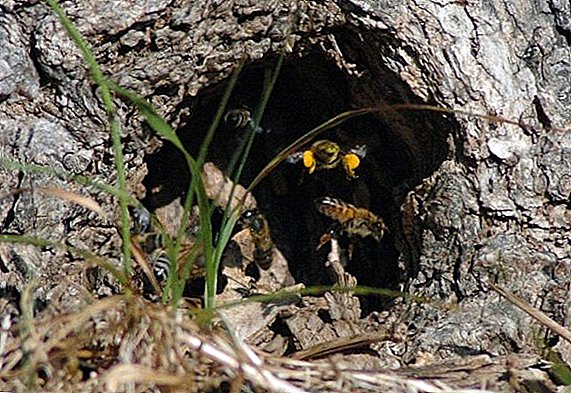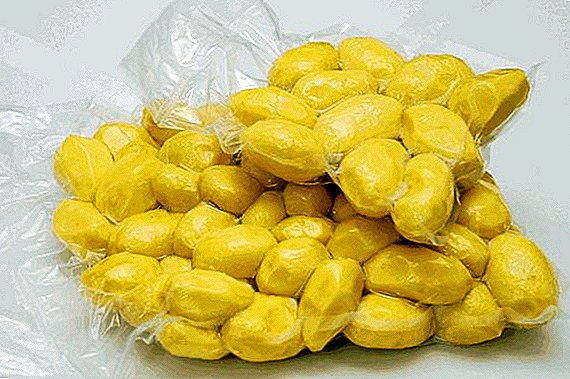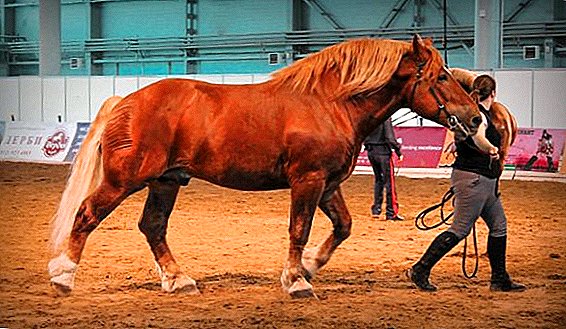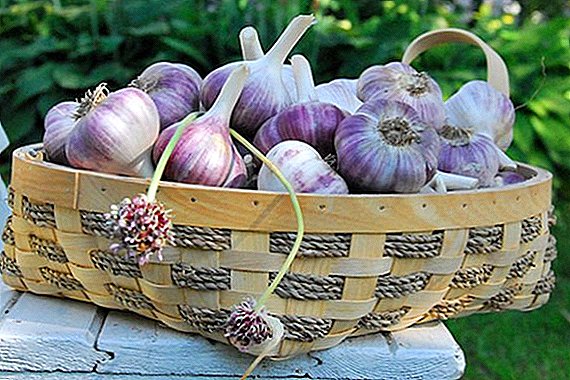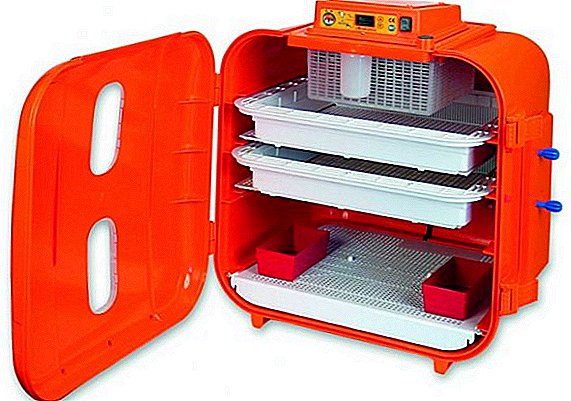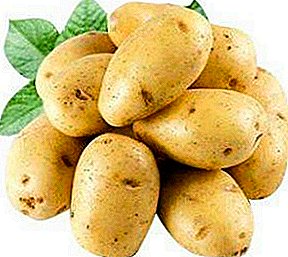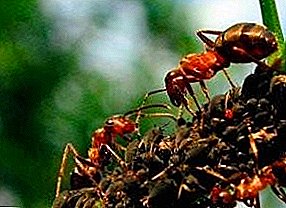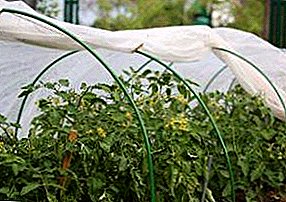
In the area of risky farming, the use of greenhouse structures is the most acceptable way to grow heat-loving plants. Tomatoes, one of the crops, the maximum yield of which can be obtained only with the use of greenhouses.
Using the simplest greenhouses allows you to get the first fruits of tomatoes in early July. In addition, tomatoes in the greenhouse produce a crop many times more. Than when grown in open ground.
It also extends the period of supply of vegetables ripened on the bush. Whereas, when planted in open ground, it is necessary to pluck the unripe fruits, which affects their taste.
Greenhouse varieties
To grow tomatoes under cover you should choose hybrid varieties. Moreover, preference should be given to such species that independently limit growth. Varieties must be medium and undersized. In greenhouses, it is recommended to plant only hybrids, since they are more resistant to diseases and less affected by pests.
The most popular and successful for growing in greenhouses, according to experienced gardeners are the following varieties:
- Samara - tomato wrist type fruit formation. Fruits up to 90 gr., Smooth, suitable for canning.
- Honey drop - grade sugar, yellow color.
- Labrador - short, fruits 50-60 gr., not stepson. The variety is able to tie fruit even in adverse conditions.
- Talalikhin 186 - flat-round fruits, up to 100 gr., medium tall. The disadvantage of the variety is not resistance to late blight.
- New Year - fruits are yellow, large, suitable for long-term storage. The variety is resistant to diseases, different friendly yield of the crop.
- Russian size - salad, red fruit up to 500g. Bush srednerosly, resistant to diseases.
Growing up
Planting tomato seedlings
Seedling quality - component of success in obtaining a good harvest of tomatoes.
 For sowing, prepare the boxes, fill them with steam-sterilized soil mixture. Suitable special ready mix for tomatoes.
For sowing, prepare the boxes, fill them with steam-sterilized soil mixture. Suitable special ready mix for tomatoes.
Or a substrate of four parts of sod land and two parts of sand.
To increase nutritional value, a little wood ash is added to the mixture (10 l. Glass).
Seeds before sowing better to germinate in a moistened tissue. After 4-5 days, they swell, and they can be placed in the ground. Have seeds should be tight enough, since there is no guarantee that they all will sprout. Spread the seeds over the surface, sprinkle them with a layer of soil of 1.5-2 cm, cover the box with a film. Sprouting should be carried out at a temperature of 22-25 degrees, in a bright place.
IMPORTANT! Make sure that the sun does not fall on the box, otherwise the seeds will simply boil, and you will not wait for the shoots.
As soon as the first shoots appear, the film should be removed, and the temperature should be lowered to 18-20 degrees so that the plants do not stretch. When tomatoes have some real leaves, seedling swoops at a distance of 8-10 cm from each other.
Soil preparation
Carrots, onions, cucumbers, and zucchini can be precursors of tomatoes at the site.
IMPORTANT! You can not plant them in the place where they grew potatoes, peppers.
Also not recommended to plant tomatoes to the same place which they grew up in last season. The soil at this place is depleted, as the tomatoes grown there, pulled out the necessary minerals.
If your greenhouse is portable, consider this condition. In a stationary greenhouse, the soil must be replaced. The soil should be loose, with a sufficient content of sand or peat. You also need to make a well-rotted humus. But do not add it too much, it will lead to the growth of leaves.
IMPORTANT! Do not fertilize the beds under the tomatoes with fresh manure. The roots of this will burn, and the fruits will not be tied.
It is also necessary to observe the acidity of the soil, to reduce it using dolomite flour or slaked lime.
Planting seedlings
 Before you put a tomato seedling in a permanent place in the greenhouse, it should be tempered, accustomed to the sun.
Before you put a tomato seedling in a permanent place in the greenhouse, it should be tempered, accustomed to the sun.
If you transplant unprepared plants into the ground, they will start to ache, burn under the sun, and may even die.
The hardening process begins in the cold season, with the help of open vents.
You can take out the seedling boxes on the balcony so that it gets used to the low temperature. In addition, before planting in the ground it is necessary to reduce the frequency of watering seedlings.
With the onset of warm days, take out the boxes of seedlings on the street and place in a place protected from wind and sun. Do not let the sun on the seedlings, especially in the first week. Before planting, in two or three days, put the boxes in the greenhouse so that the plants are accustomed to its conditions. Film or frame during the day to open.
As soon as the threat of frost has passed, the tomatoes are planted in a greenhouse. This usually occurs in mid-May.
Tomato bushes are planted on a distance of 35-40 cm from each other, row spacing - 50-60 cm. If the bushes stretched out, you can put them on a slope, with the crown on the north side. Having got accustomed, the bush will rise to the south, and will form a powerful root system.
After planting tomatoes in the greenhouse, they are watered and the ground is mulched so as not to form a crust. A week after planting, the plants are treated with a disease against late blight.
We make a greenhouse
Making a greenhouse for tomatoes with your own hands is not so difficult. You can build a greenhouse from many materials. A few simple options for greenhouse tomatoes From a photo we will consider further:
Arcuate greenhouse of pipes
The material for such a greenhouse are plastic pipes. Of them built a kind of tunnel in the garden. It is advisable to have a garden in the direction of west-east. Pipes (or metal rods) are stuck into the ground at a distance of about 60-80 cm from each other. Top covered with plastic film or non-woven covering material. The bottom of the covering material is fixed by any heavy objects. This type of greenhouse is suitable for undersized tomatoes.
Greenhouse for tomatoes from old frames
Used for the manufacture of used wooden frames, placed on a wooden base. Decide on the length and width of the structure and make the base of the greenhouse, driving the pegs into the ground along the perimeter. Tie pegs with a rope and lay the foundation of bricks, fastened with cement along the line. On the foundation is laid wooden beam of the desired length. The number of rows of timber is determined by the height of the greenhouse. It is not recommended to make a greenhouse more than 1.2 meters in height. The frames are screwed to one side of this frame, so that they can be opened upwards.
Another version of a simple and inexpensive greenhouse from old frames you can see in this video:
Greenhouse under the tomatoes covered with foil

For this design are made of wooden frames covered with film. Four frames will be needed for the side walls and one or two in order to fasten the top. The size of the frames depends on the size of the planned greenhouse.
Care
There are several simple rules for growing tomatoes in a greenhouse. From the correct care of tomatoes depends on the number of fruits removed from the bushes. Plant care consists of the following steps:
Watering and fertilizer
Water the tomatoes should be moderate, because excess moisture in a greenhouse will lead to the development of diseases. Water during irrigation should reach the roots, so watering should be done in several stages, waiting for the liquid to be absorbed. Apply for top dressing of tomatoes complex special fertilizers.
IMPORTANT! Do not feed tomatoes ammonium nitrate. From such feedings will begin a sharp increase in foliage, and the fruits will not be formed.
Masking (trimming)
Too thick tomato bushes in the greenhouse interfere with the formation of fruit on them, so the extra stems are removed from them. Bottom branches extending from the trunk (stepchildren) are removed with a secateur. Some varieties should also trim the top.so that the bushes do not stretch up. These techniques help the plants to form a sufficient number of fruits, and not to expend energy on the growth of leaf mass.
Garter

In order that the bushes do not fall under the weight of fruits, they are tied to pegs stuck at a distance of 20 cm from the stem into the ground.
There are many ways to properly garter. The main thing is not to forget that the rope should be soft and does not damage the delicate shoots.
Hilling and loosening
Several times during the season, tomatoes in the greenhouse should be loosened and spud. Loosening provides access to oxygen to the roots, and hilling helps to form additional roots on the trunk.
Disease prevention
Once in 20 days tomatoes process copper preparations to protect against late blight.
Stimulation of fruit formation
There are special preparations to increase the formation of ovaries on tomatoes. Spray these plants during flowering. You can use a solution of boric acid 1g. per liter.
Ventilation
The tomato does not like humidity and overheating above 30 degreestherefore, the greenhouse should be slightly opened from the ends or the frames should be raised. When setting hot weather, the shelter can be removed completely, covering tomatoes only at night.
If frost occurs
When the threat of night frost occurs, tomatoes need a greenhouse for additional heating. To keep warm during the night cooling, you can use the following methods:
- Biofuels. This includes plant and animal products that produce heat under certain conditions. A warm bed is laid in the greenhouse with the help of manure, foliage, straw. All components are mixed, and stacked on the bed under a layer of earth. The mixture is buried to a depth of 50 cm, a layer of earth is poured in from above, 30-35 cm high. Heat is generated on such a bed for 60-70 days.
- Water heating. Along the perimeter of the greenhouse you can put plastic bottles filled with water. Water heats up during the day and produces heat at night.
As soon as you cover the greenhouse with a film overnight, the heat from the water will maintain the temperature until the morning and your tomatoes will not freeze.
- Heating watering. If there is a threat of night cooling, you can apply the method of heating watering.
The soil heated in the afternoon in a greenhouse is watered in the evening and immediately closed with a film. The heat released during irrigation will save the plants, as the temperature inside the greenhouse will continue until morning.

Growing tomatoes in a greenhouse is a process that requires adherence to certain rules. Only strict compliance with them will allow you to get a rich harvest on your site.



